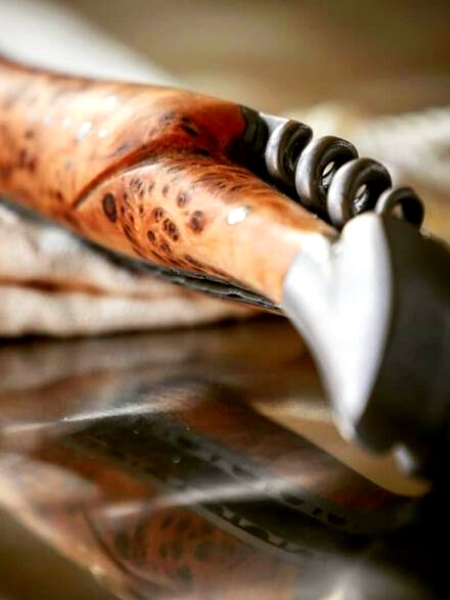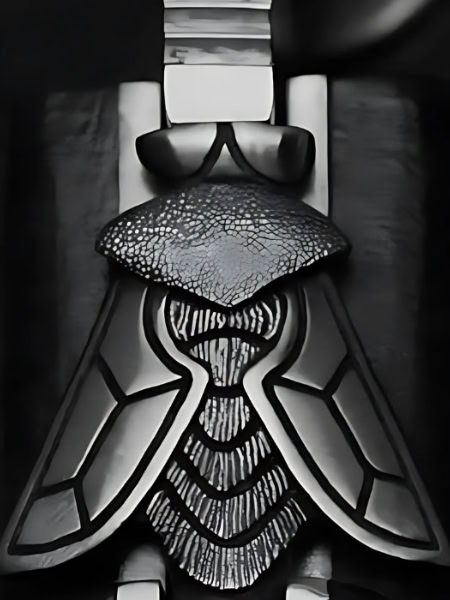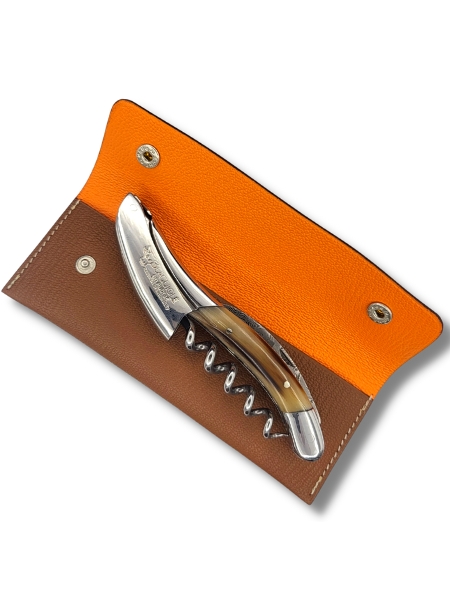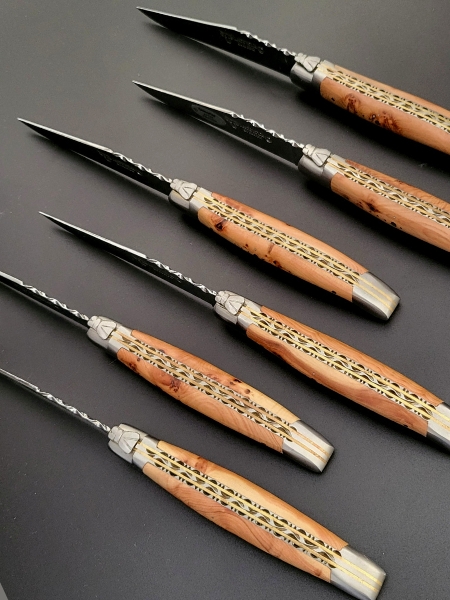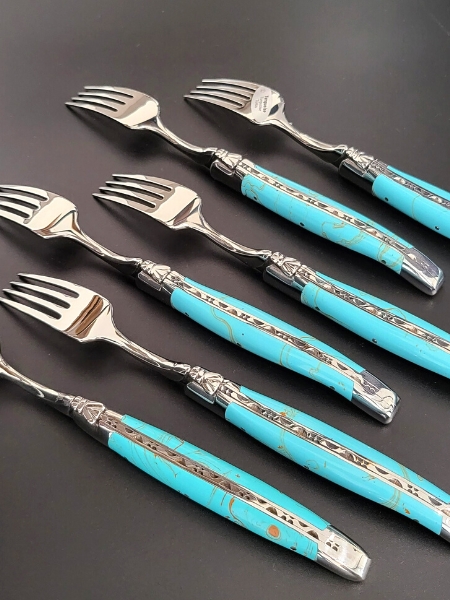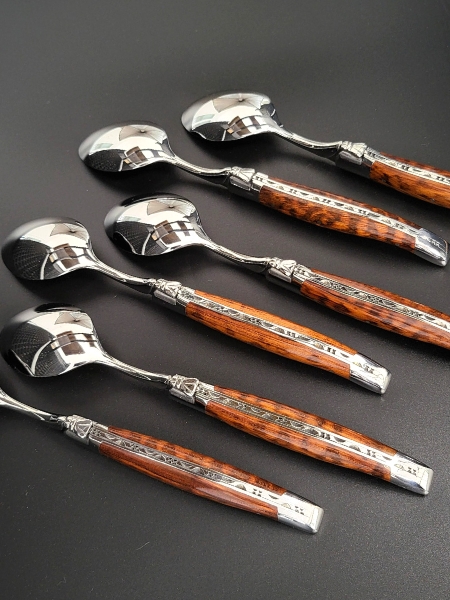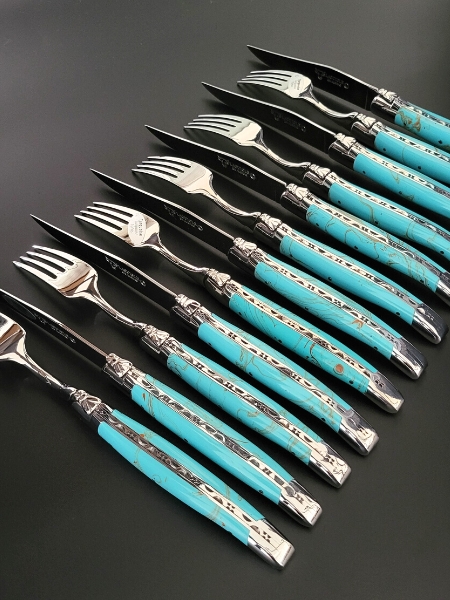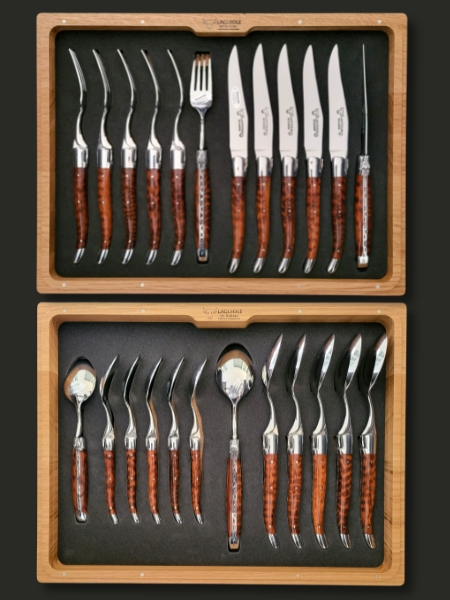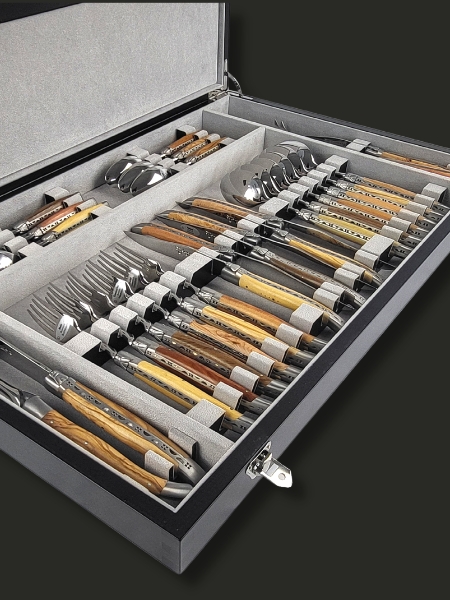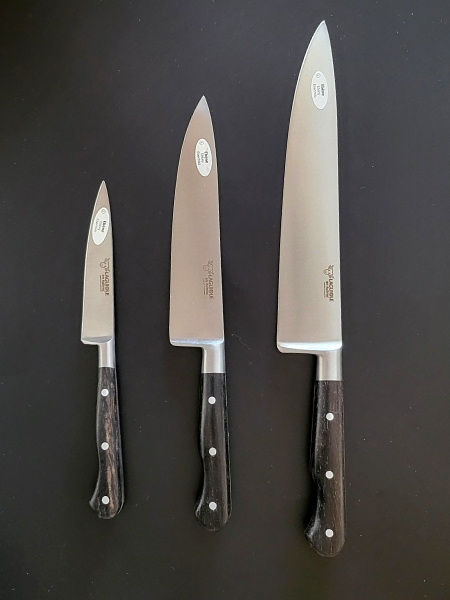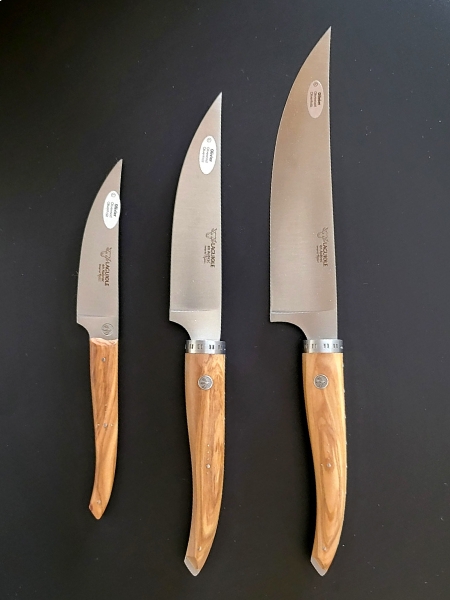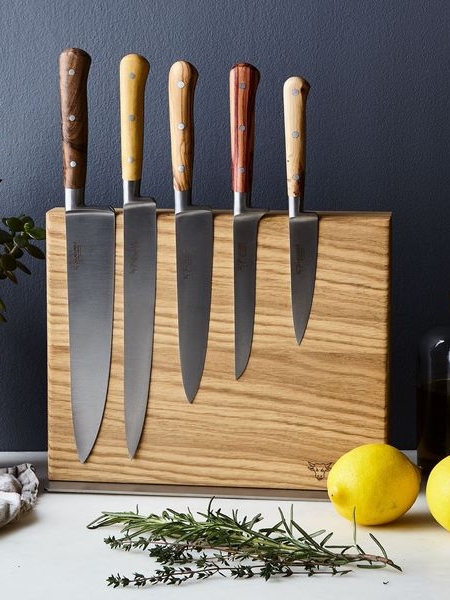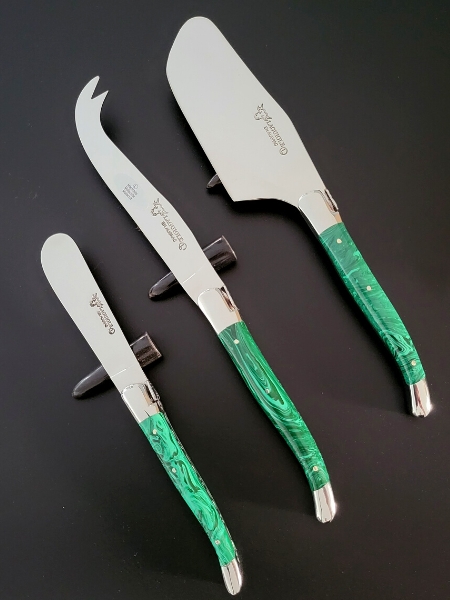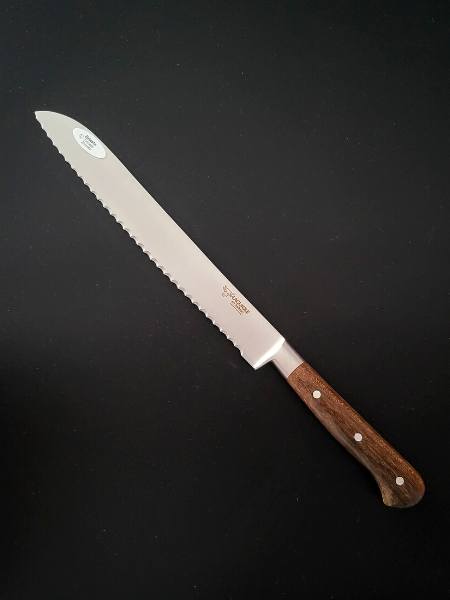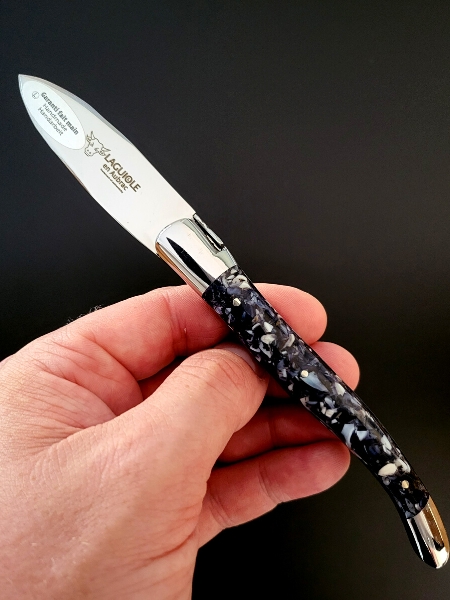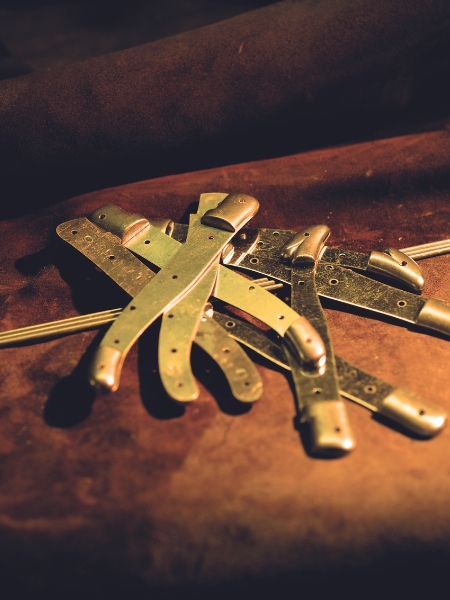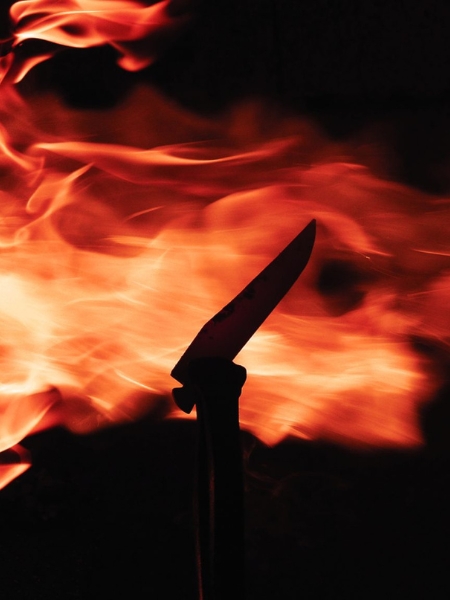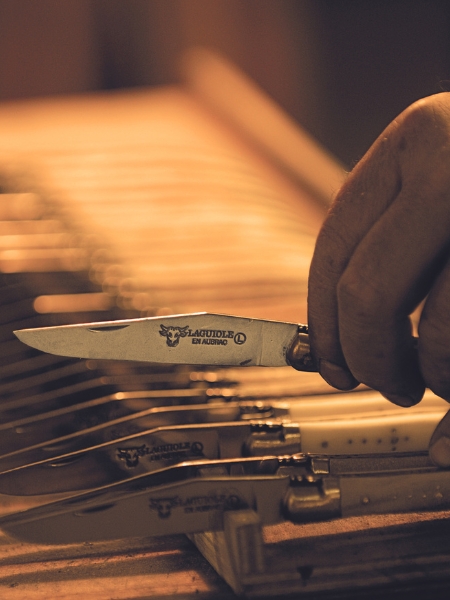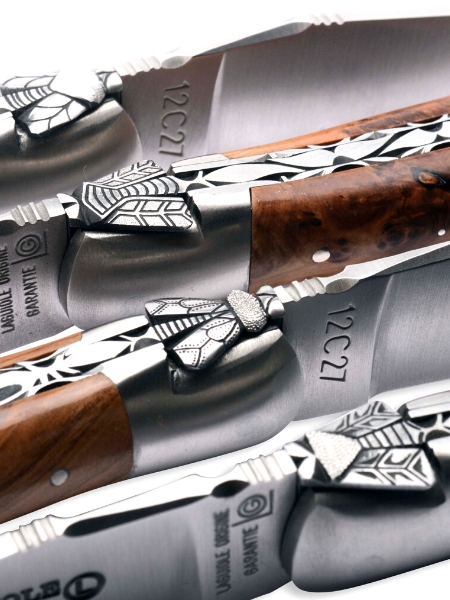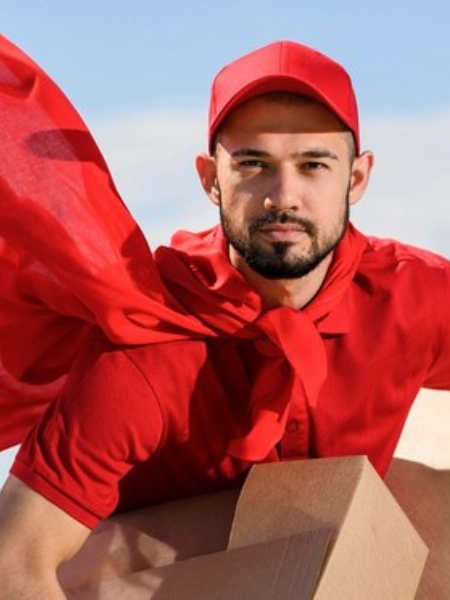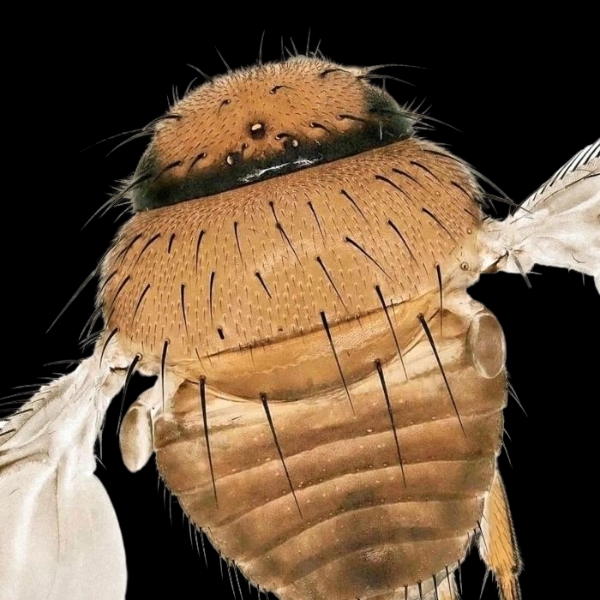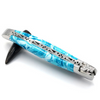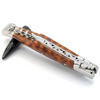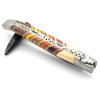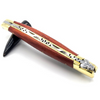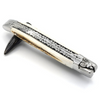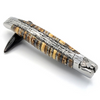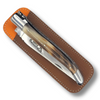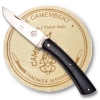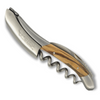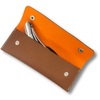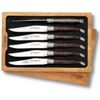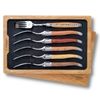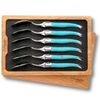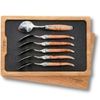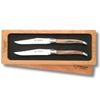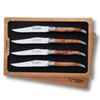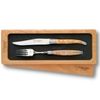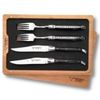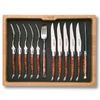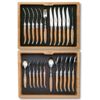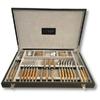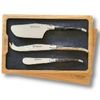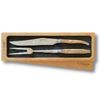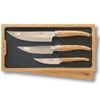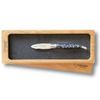
1. The history of the Laguiole knife
Cutlery tradition in Espalion
The cutlery activity in Espalion dates back far, as there were already two cutlers in the 17th century. The production responded to the specific needs of the local population: straight knives called capujadou, scissors for marking livestock, bread-cutters, pruning knives, and vineyard tools, as well as hatchets for forestry. By the end of the 17th century, Espalion had become one of the five clandestine centers for assembling inexpensive folding knives with a Saint-Etienne nail, called “jambettes stéphanoises”.
The assembly of these knives was orchestrated by a family of master cutlers, the Canel, originally from Chambon, a cutlery commune near Saint-Etienne. The knives were sold in the region by peddlers and at fairs. Canel’s son, also a cutler, would become the Bayle of the Confrérie Saint-Eloi d’Espalion. This very ancient and still active brotherhood brought together the trades related to forging and metalwork.
Important information:
It is important to emphasize that the history of the Laguiole knife, as well as the associated dates and events, are subject to historical interpretations and debates. The text presented here is based on research and information available to date, and it attempts to trace the journey of the Laguiole knife through the centuries. However, it is entirely possible that some parts of this history may be questioned or deepened as new discoveries and historical advances emerge.
Furthermore, the text does not claim to provide an exhaustive and definitive view of the history of the Laguiole knife, but rather to offer a general overview of the main stages and developments of this iconic French craftsmanship object. We strive to present accurate and verified information, but we cannot be held responsible for any inaccuracies, omissions, or divergent interpretations.
Finally, it is essential to keep in mind that history is a constantly evolving discipline, and our understanding of the past is always subject to refinement, enrichment, and revision. Thus, the text presented here may evolve and adapt according to historical advances and new research on the subject of the Laguiole knife and its cultural heritage.
“In 1829, in the small mountain village of Laguiole, located in Aveyron (southwestern France), a humble peasant knife was born. The famous bee, emblem of prestige and quality, which adorns its spring, will contribute to making this knife the most renowned in France.”
The Laguiole knife is an unmistakable symbol of French craftsmanship and its ancestral know-how. It takes its name from the small village of Laguiole, located in the Aubrac region, in the heart of Aveyron. The history of the Laguiole knife dates back to the early 19th century and is closely linked to the history of the region and its inhabitants.

The origins of the Laguiole knife
The history of the Laguiole knife begins around 1829 when farmers in the region, particularly cattle drivers and shepherds, felt the need for a reliable and sturdy knife to accompany them in their daily work. At the time, the most common knife in the region was the “capuchadou”, a small folding knife with a pointed blade. However, this knife did not fully meet the peasants’ requirements and did not have a safety catch to prevent the blade from closing.
It was then that local craftsmen, inspired by Catalan knives and Spanish navajas, began to create a folding knife better suited to the needs of the local population. The Laguiole knife was born, with its distinctive shape, “yatagan” shaped blade, and slightly curved handle.
The development of the Laguiole knife
Over the years, the Laguiole knife evolved and incorporated new elements, such as the spring, the forced notch, and the fly (or bee), a decorative element located at the end of the spring. The bee is now an emblematic element of the Laguiole knife, although it is not exactly known when and why it appeared. Some hypotheses suggest that it could be an imperial symbol granted by Napoleon in recognition of the courage of the region’s inhabitants during the Napoleonic wars.
The Laguiole knife enjoyed great success from the end of the 19th century and until the first half of the 20th century, both in France and abroad. Local craftsmen continually innovated and offered new models, with increasingly precious materials for the handle, such as wood, horn, ivory, and metal. The Laguiole knife was then considered a luxury and prestigious object, given as a gift on special occasions.
The decline and revival of the Laguiole knife
In the 1950s, industrialization and mechanization of production led to a decline in traditional craftsmanship. The Laguiole knife manufacture was severely affected and experienced a period of decline until the late 1970s.
Fortunately, in the 1980s, a revival was initiated thanks to the initiative of enthusiasts who wanted to preserve the know-how and tradition of the Laguiole knife. Local entrepreneurs, such as Pierre-Jean Calmels, undertook to relaunch the artisan al production of these exceptional knives by creating new manufactures in the Aubrac region. These companies focus on quality, authenticity, and respect for traditional techniques.
The revival of the Laguiole knife is also accompanied by a creative renewal and diversification of the models offered. Thus, contemporary Laguiole knives can be adorned with various motifs, such as metal inlays, engravings, or chiseling on the springs and plates. The materials used for the handles are also more varied, ranging from precious woods to modern synthetic materials, as well as natural materials such as horn or bone.
The Laguiole knife today
Today, the Laguiole knife has become a true symbol of French cultural heritage and a hallmark of artisanal excellence. It is appreciated for its quality, aesthetics, and functionality, and it is often given as a gift on occasions such as weddings, baptisms, or family celebrations.
Unfortunately, the success of the Laguiole knife has also led to the proliferation of counterfeits, often manufactured abroad and of inferior quality. To combat this phenomenon and protect the authenticity of the Laguiole knife, it is essential to support local artisans and prioritize the purchase of knives stamped “Laguiole” and manufactured in the Aubrac region.
In conclusion, the history of the Laguiole knife is a true epic, reflecting the challenges and successes of French craftsmanship over the centuries. Despite the trials faced, the Laguiole knife has preserved its authentic character and unique know-how, testifying to the richness of French cultural heritage and the resilience of its artisans.

2. Local Heritage: Aubrac
Aubrac is a region located in the south of the Massif Central, in France, mainly spread between the departments of Aveyron, Lozère, and Cantal. This region has a rich local heritage, both culturally and naturally. Here are some elements of Aubrac’s local heritage:
Landscapes and environment: Aubrac is famous for its landscapes of vast granite plateaus, pastures, and forests. The flora and fauna are diverse and preserved, providing an ideal setting for hiking and nature observation.
Traditional architecture: Aubrac is home to many picturesque villages and hamlets, with stone houses, lauze roofs, and burons (old stables used for the production of local cheeses). Notable villages include Laguiole, Nasbinals, Saint-Chély-d’Aubrac, and Aubrac.
Craftsmanship: Local craftsmanship is an essential element of Aubrac’s heritage. Cutlery is particularly renowned, with the famous Laguiole knife. Other artisanal trades include forging, pottery, basketry, and the production of traditional cheeses.
Gastronomy: Aubrac’s cuisine is rich and flavorful, highlighting local products such as Aubrac beef, aligot (mashed potatoes mixed with fresh cheese), truffade (a dish made from potatoes and cheese), and cheeses such as Laguiole and Bleu des Causses.
Religious heritage: Aubrac has several remarkable religious buildings, such as the Romanesque church of Nasbinals, the church of Saint-Chély-d’Aubrac, and the Dômerie d’Aubrac, a former hospital and hospice for pilgrims on the Way of St. James (Camino de Santiago).
History and traditions: Local festivities and events, such as transhumance (the seasonal movement of livestock between winter and summer pastures), bear witness to the ancestral traditions of Aubrac and its attachment to rural life and livestock farming.


